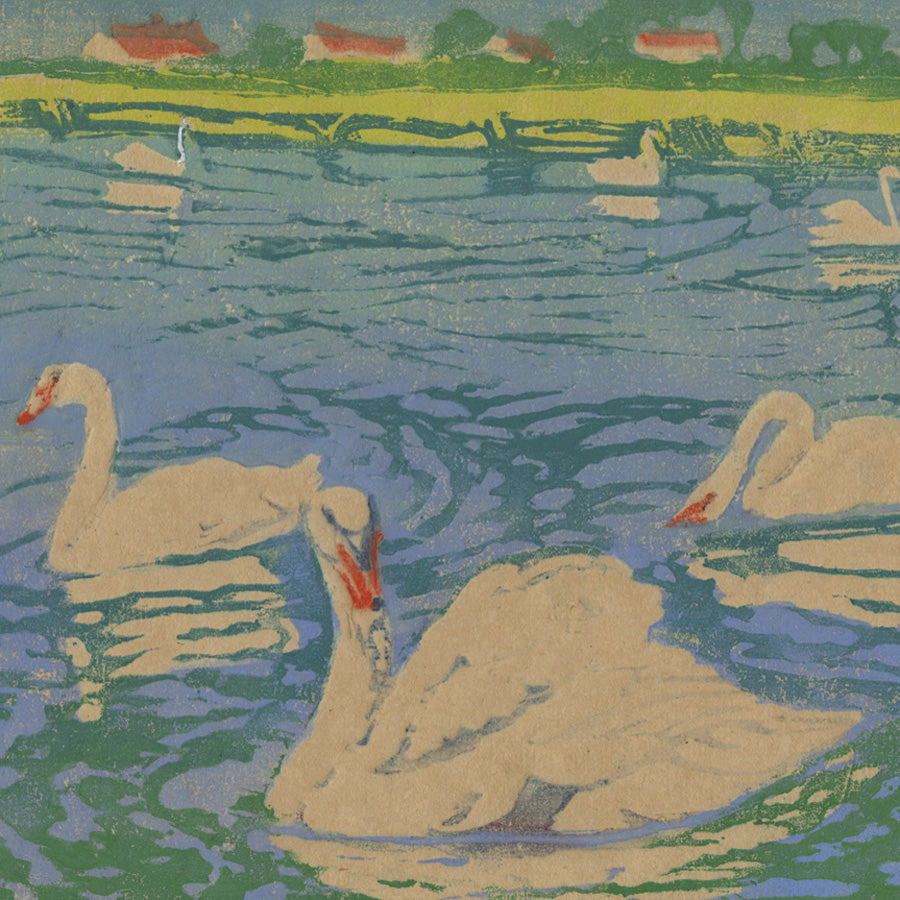 Sold
Sold
Swans
PATTERSON, Margaret
Color woodcut on thick off-white laid paper.References: This work is not listed in Bakker's 1989 and 1990 retrospective catalogs on the artist.Edit...
View full detailsBorn on a ship for which her father was captain, Margaret Jordan Patterson (1867-1950) grew up mostly in Boston and Maine. Her first art courses were taken by correspondence and in 1895 led to her to enroll at the Pratt Institute. There she was taught, amongst others, by Arthur Wesley Dow. Her seafaring father clearly instilled a traveling spirit in Patterson, and like many artists of her generation she travelled to Europe. She would return to Europe frequently throughout her life, spending extensive periods of time in Italy and France. In 1910, while in Paris, she was shown the rudiments of the technical skills needed to create color woodcuts from American artist Ethel Mars.
Early color woodcuts by Patterson were made mostly after paintings, but this practice soon changed, and her watercolors became preparatory drawings for prints rather than oil paintings. Early subjects tend to be landscapes, while later compositions were mostly still lifes. Unlike other Western artists who made woodcut, she would use a color for her key block, rather than black ink, or no key block at all. This results in prints which feel very painterly, and the artist accentuates this by varying thickly applied colors which resemble gouache, and often cutting her sheet to the image edge, rather than show a paper margin. The work of this pioneer woman printmaker is now being held by the most prestigious museums in the United States: a clear sign of her groundbreaking stature.
 Sold
Sold
Color woodcut on thick off-white laid paper.References: This work is not listed in Bakker's 1989 and 1990 retrospective catalogs on the artist.Edit...
View full detailsPlease sign up for our newsletter
Email: info@armstrongfineart.com
Phone: 773-887-6776
1200 West 35th Street, #186
Chicago, IL 60609
Copyright © 2026 Armstrong Fine Art.
Development by Alo Agency. Powered by Shopify
